This article is the first installment in a three-part series on oil, nostalgia, and the southwestern Iranian city of Abadan. Part two can be found here. Part three can be found here.
The series is authored by Rasmus Christian Elling, an assistant professor at the University of Copenhagen where he teaches the sociology and modern history of Iran as well as urban theory. He has recently published a book on minorities, ethnicity and nationalism in Iran after Khomeini, and is now working on the history of Abadan. This series was originally published in Danish.
You can support Elling’s Internet campaign to fund more research and publications on Abadan here.
Part One
What if oil is magic?
Sure, we are used to think of oil as a curse disguised as a blessing: as oil is extracted and refined, it turns into black gold for the few and misery for the many. Oil reeks of pollution and corrupt autocrats, it smothers democratic forces. Oil makes a nation addicted to non-renewable resources and dependent on a global market out of its control. Oil spoils nature, society and politics.
And yet the forgotten story of a city in Iran reminds us that oil can also be the stuff of imagination, bringing life to a place, making people dream and remember.
This is the story of a city that was brought into being by oil, almost killed by oil, and yet still understands itself through oil.

—-
“It was with oil from here that the Europeans were able to lit up their streets,” my host asserts while his ancient, rusting car struggles on a dark dusty road full of potholes during one of my recent trips to Abadan. “Without Abadan, Europe would still be in darkness!”
We are in Khuzestan Province in southwestern Iran along the border with Iraq, where the Euphrates, Tigris and Karun rivers flow together and into the Persian Gulf.
Abadan was once home to the world’s biggest oil refinery. Around the refinery was one of the Middle East’s most modern and diverse cities. Today, Abadan is a mere shadow of its former self. Revolution, war and stagnation left the city hollowed out and forgotten. Its citizens recollect the past with a nostalgia that runs thick in the cultural veins of the city.
When I first visited Abadan, it was to learn about its violent past under the British-owned oil company that ran Abadan as a virtual colony in the first half of the twentieth century. I heard echoes of the narratives I was looking for: how oil brought British imperialism and global petro-capitalism into Iran; how oil created and crushed labor movements; and how oil consolidated the Shah’s dictatorship.
And yet, time and again, Abadan refused to tell me the simple story I wanted to hear. One Abadani after another preferred to tell me fond memories of peaceful co-existence, cultural blossoming, material prosperity, welfare and well-being with the oil industry as the driving force.
There was a dissonance between the records of injustice I had unearthed in the historical archives, and the romanticized past I was presented with in present-day Abadan. Nostalgia for the past, sweet and bitter, seemed to saturate society. I wanted to understand why.
The longing for a time or place in the past is not necessarily regressive: it demands active remembrance and amnesia; it involves selective rearrangement and creative reproduction. Rather than being unmodern, nostalgia is part of modernity: it enables one to stand outside of the present and criticize ‘the modern’. It gives momentary respite from the present, but it also suggests possible futures.
In a fast century, Abadan has seen oppression, war and upheaval enough to trigger a desire for escapism and re-enchantment. But rather than a mere psychological reaction, nostalgia can be visualized as a contested terrain on which Abadanis recreate their history. At the geographical, historical and social center of that terrain stands the towering presence of oil.
The dominant literature mostly treats oil in terms of economy or geopolitics: it is a commodity, and as money, it impacts on states and politics. More nuanced research has instead focused on the social and cultural impact of oil as seen from below, within communities. By conceding oil historical agency on the border between man and nature, this research enables us to better understand its role in shaping and affecting people, classes and cities, myths and emotions.
In this three-part essay, we will look at Abadani nostalgia through memoirs and local histories — the nostalgic books, I call them — and through fragments from interviews I conducted in Abadan in 2012. These memoirs, memories and fragments are analyzed as if they were oil products: through them, we can understand the magic power with which a natural resource can move and change people, create and nearly destroy a city — and yet continue to sustain its imagination and self-understanding.


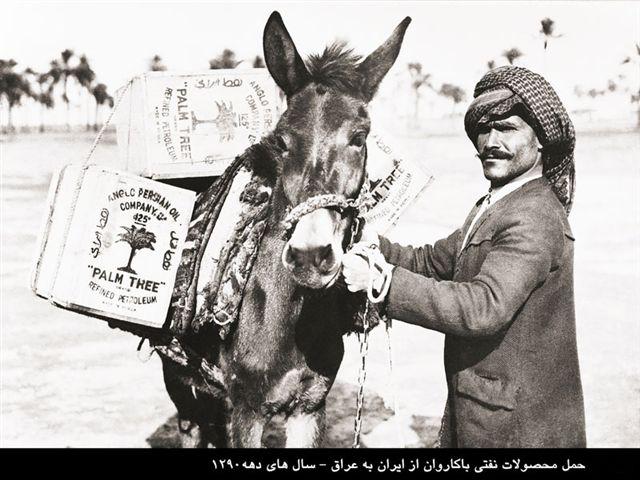
Abrupt leaps of the past
When flying into Abadan at night, the oil refinery stands out as a visible center from which the city sprawls, lit up in intervals by flames gushing from the oil towers.
It is hard to imagine that just over a hundred years ago, the little island of Abadan only contained villages of Arabic-speaking tribes living in mud huts, growing date palms, fishing and trading with the neighboring towns. Even though oil literally seeped up through the ground and into homes across the province, no-one probably guessed its impending global significance. The unnoticed presence of oil would be, in a very short time, starkly contrasted with its manifestation at the epicenter of development and conflict in the whole .
An exploration team sent to Iran by a venture capital millionaire in London struck oil in 1908. Soon, the Anglo-Persian, later renamed Anglo-Iranian, Oil Company (APOC/AIOC, today known as BP, and in this essay simply ‘the Company’) was established. A rudimentary refinery was erected on Abadan’s muddy banks, which from 1913 was able to ship oil to a world market in explosive growth. Within a decade, oil from Iran catapulted the Company into extreme wealth and global power. Locally, the establishment of the refinery became the first physical manifestation of the magic power of oil. Through oil, Abadan village gave way to a bustling city.

From an overlooked outpost, Abadan became a center of economy, a symbol of modernity and a hub of development. By the 1930s, oil had spawned a multi-cultural if segregated city with a progressive if unequal society. It had middle class suburbs alongside impoverished shantytowns. It saw both ruthless suppression of labor activism and increasing social mobility. As a key entry point for new technology, fashion and consumerism, Abadan’s image was that of a liberal, leftist haven.
Labor strikes in 1929 and 1946 foreshadowed the 1951 oil nationalization movement. Abadan gave birth to famous artists, novelists and cinematographers, many of whom would set the tone for the movement that culminated in the Shah’s overthrow in 1979. The chaos of the Islamic revolution was followed by Iraq’s 1980 invasion of Iran that led to a bloody eight-year war during which Abadan was evacuated and bombed.
Although it is today repopulated, Abadan has never regained its pre-revolutionary status and glory. Oil lost its magic powers, and Abadan’s progress was abruptly stopped. The city was more or less forgotten by those in power. But the memory of old Abadan lived on.
The brevity and intensity of the city’s history is almost tangible in breathless prose of nostalgia such as this.

“I was reminded of what we called life, within the framework of certain principles and rules, and the culture of the city of Abadan that came to life where British discipline met with the peculiarities of the 72 nations [a metaphor for Iran’s multi-ethnic population], what we called Abadani society, where, far from all the backwardness of other cities, one could enjoy a tranquil breath of air, and I remember it as if it was a dream, a dream that moved with the speed of lightning throughout my life, and I realized that life in Abadan, with all its good facets, love, warm-bloodedness, hospitality, beauty, progress and principled order, just as in the life of civilized nations, whatever it was, was but a dream, and I was gripped by an urge to tell about all that I had heard and seen, touched, learnt and lost, from my birth until the day the Imposed War [a metaphor for the Iran-Iraq War] forced us away, an urge to tell this story under the heading Abadan was a dream.”
This is from the opening pages of Anglo va Bangolo dar Âbâdân (Anglo and Bungalow in Abadan, 2010) the first book by Iraj Valizadeh, born in 1938, who has worked in radio, theatre and in the refinery. It is one of several books written over the last three decades by Abadan enthusiasts, amateur historians and local luminaries.
Based on his own and his father’s memories, Valizadeh’s book resembles a chaotic stream of thought, absentminded but full of information. The narrative jumps from one topic and format on one page to another on the next: from personal memories of growing up in the houses and streets of Abadan, to translations of articles from the Company’s English-language newsletter; from detailed rundowns of engineering accomplishments in the refinery to recipes for local dishes; from minute descriptions of architecture to lists of records set by local sportsmen.
The whole narrative is tied together with that of oil, which is also reflected on the cover of the book: behind the title looms the refinery towers, and under it, pictures of the gentlemen who established the oil industry and thus modern Abadan, which is represented by a neat bungalow. In the upper left corner, it simply says “identity”. The cover, like the content, draws a direct connection between oil, the foreign capitalist forces that extracted it, and the material progress it would manifest in local community.
Valizadeh romanticizes the past while questioning its reality, asking himself whether Abadan was in fact just a dream. Or was Abadan like a dream?
The dream is kept alive today by many Abadanis who seek to catch it in pictures, objects and stories — whether they are too young to possibly remember or old enough to put it in writing. As fleeting as it was, as transient as it is, the dream is ever lucid in Abadani nostalgia — and it is almost tangible to any visitor to the city, as I discovered.
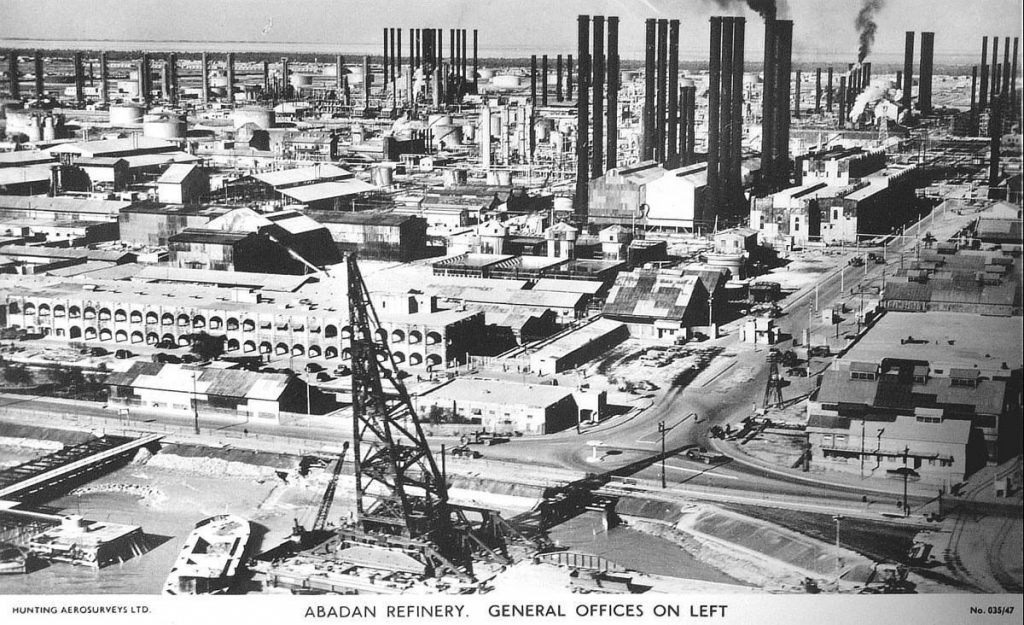
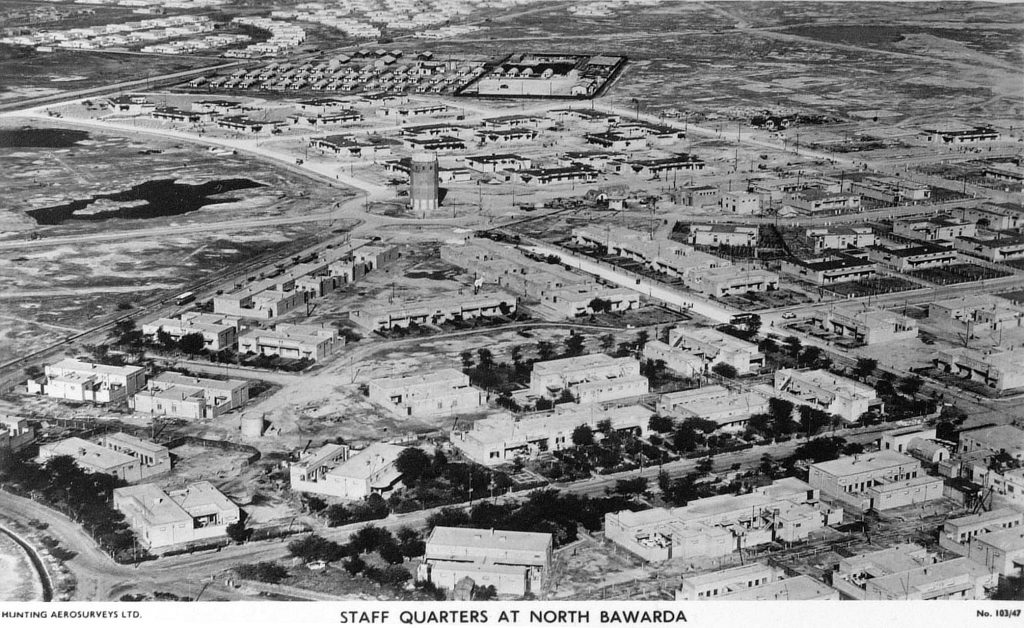
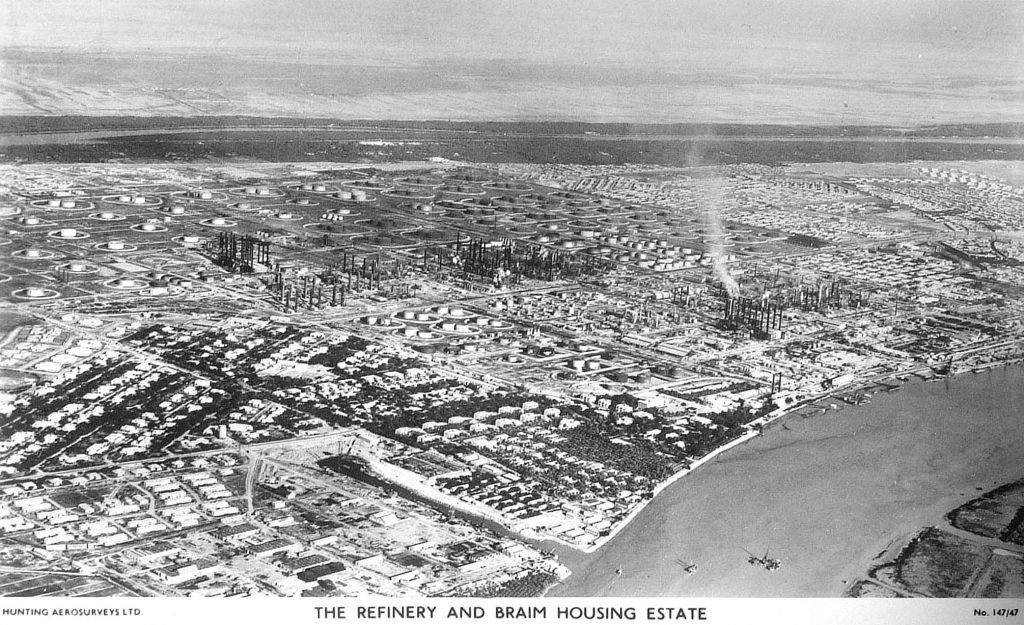
The cult of nostalgia
On my own first visit, a member of a friend’s family —a former captain on an oil tanker— spent a whole day showing me around in the city’s various neighborhoods, the museum and the bazaar.
He reminisced over the places and the the people who used to frequent them before the war, before the revolution and before nationalization: the Greek photographer’s fancy studio where people would have their wedding pictures taken; the Jewish-owned shop at the roundabout that sold magazines from abroad; the hotel lobby where oil engineers from every corner of the world would gather to tell tall tales over whiskey.
But the captain was also in a rush to get to a particular place: an unassuming little store in the bazaar that prints photos and sells CDs, DVDs and sunglasses. Here, the captain had pre-ordered a gift for me: a heavy faux-leather bound album stuffed with grainy reprints of photos from old Abadan. The seller collects the photos on the internet, and sells them the same way as when someone orders up a private family album.
In the album, there are pictures of swimming pools, family dinners and picnics in parks, of rowing contests, flower exhibitions and scenes of children being vaccinated by smiling nurses. Most women are without hijab, wearing flowery dresses and hair-dos in the fashion of Audrey Hepburn or Sophia Loren. They smile at the camera. On black-and-white photos, gentlemen with mustachios wear suits, hats and ties. And in color photos, they don trumpet trousers, button-down shirts with broad collars and 70s haircuts.
The streets are not trafficked, the cars are American. Parks, gardens and hedges are neatly groomed. From some angles, Abadan looks like a pretty sleepy suburb in post-war Florida, the idyllic scenery only complicated by the refinery smoking in the background.
The social clubs are graced by fine visits.
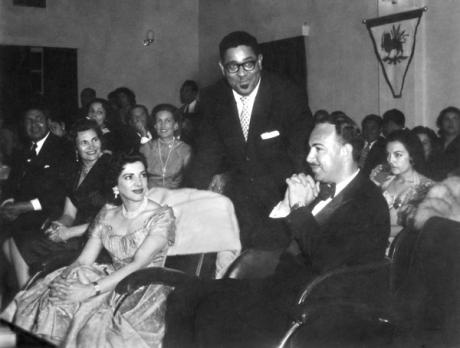

Memories of the past tend to take on an almost cultic status in Abadan today. They are embodied in symbols, narratives, texts and objects that are collected, preserved and reproduced by ordinary Abadanis to connect the present with the past.
Some Abadanis are keen hoarders of pictures, Company newsletters, plans and architectural drawings, personnel documents, uniforms, posters, medals of distinction, even rationing coupons, cinema tickets and bus timetables.
At any given dinner in Abadan, the host may pull out boxes of memorabilia or anecdotes from a long life spent in the city. Even younger Abadanis show great interest in old Abadan.


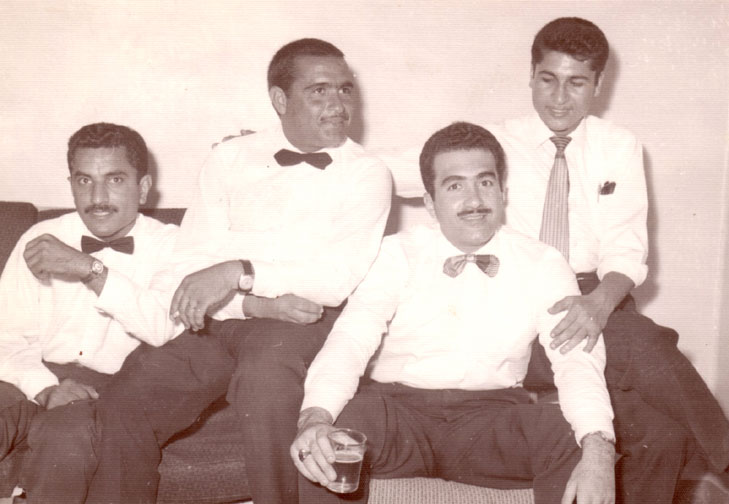
During the war with Iraq, Abadanis were scattered to the four winds. There are Abadanis living across Iran and all over the world, and yet they tend to coalesce in Abadani circles wherever they are – including on social media.
On Facebook, groups like ‘Children of the Oil Industry’ share pictures and stories sent in by Abadanis from near and far. Offline, Abadanis gather in clubs and networks, be it in Los Angeles, London or Tehran.
There is also a society for former Company employees in the West, The Abadan Society. In its newsletter, members share memories, jokes and pictures.
Abadan’s past is an exotic place.
As I browse the album in the bazaar shop, I notice that a bunch of teenagers have gathered behind me to look at the album. They are excited, and they want one for themselves.
Despite my host’s attempt to haggle, the price is non-negotiable: the business of nostalgia is flourishing.


…
As I reach the final pages of the photo album, the pictures begin to tell a gloomier story. Depressing sceneries show Abadan as a bullet-riddled ghost town, kids playing on the burnt-out carcass of a war tank, mourning and grief painted in the faces of soldiers under the blood-red banners of martyrdom.
Engulfed by war, Abadan would never become the same again.
In an exceptionally short time, Abadan experienced a series of dramatic leaps and abrupt interruptions in its trajectory. It is upon this discontinuity that nostalgia builds: a seed was planted by pioneers and with the speed of lightning, it brought about an oasis of progress, followed by a steep blossoming, and then a sudden destruction that left only a fata morgana.
But Abadan is not just a mirage. Its culture is celebrated among Abadanis across the world. In the next part of the essay, we will explore why Abadan is special; and how oil helped give birth to a uniquely Abadani identity.
…
This essay is part of a reworked version of:
Elling, Rasmus Christian. 2014. ‘Oliebyen midt i en jazztid: Nostalgi, magi og det moderne i Abadan’, Tidsskriftet Kulturstudier, 2/24. Download here.
Note from the Author: This essay is intended for a broad audience and does not follow academic rules for quotes and citations. Anyone interested in the original article can refer to: Rasmus Christian Elling: ‘Oliebyen midt i en jazztid: Nostalgi, magi og det moderne i Abadan’ in Tidsskriftet Kulturstudier, 2/24, available for free download here: tidsskriftetkulturstudier.dk/kulturstudier/wp-content/uploads/webfil_rasmus-24-47_kulturstudier_2014-02.pdf.
I would like to thank Tidsskriftet Kulturstudier for letting me convert the article to the present essay. My research on Abadan started as part of the Anglo-German research project Urban Violence in the Middle East and is based on years of research in British Petroleum Company Archives, the British National Archives, the Iranian National Archives, as well as on interviews and many other primary materials. I am greatly inspired by the works of Kaveh Ehsani and Nelida Fuccaro. At the end of the third part of the essay, I attach suggested readings for those who want to know more about Abadan or about urbanism based on natural resource extraction.
Finally, I would like to thank all the Abadanis, in Abadan and across the world, who have treated me as a special guest and sometimes even as a fellow citizen — despite the fact that I used to have no other affiliation to the city than my curiosity. A wonderful thing about any city is that it contains such a wealth of personal stories and conflicting histories. I know I cannot do them all justice. Any short text about a huge topic is bound to generalize, and this essay is no exception. If you want to tell me your story of Abadan, please contact me: elling@hum.ku.dk.












10 comments
Thank you for sharing your knowledge with us in such a tasteful and well-written way.
Both of my parents are from Abadan, however, unfortunately I have never been to this grand city. Whenever you meet an Abadani (A person from Abadan) they cannot stop talking about Abadan pre-revolution of how great it was.
Your piece of writing is amazing in helping me and others like understand, where all of this pride came from.
Thank you!
That was great. It refresh all memory of my love Abadan. I ,ve Abadan in my heart until I die.i love u. Thank u so much for that
I was born in 1956 in the city of Abadan – now seems like a long long ago and far far away in a culture and a place that was special, unique, yet Contradictory to Its perceived character – oh how lovers yearns for union with the Beloved yet suffer the agony of rejection .
To borrow from Charles Dickens novel tales of two cities